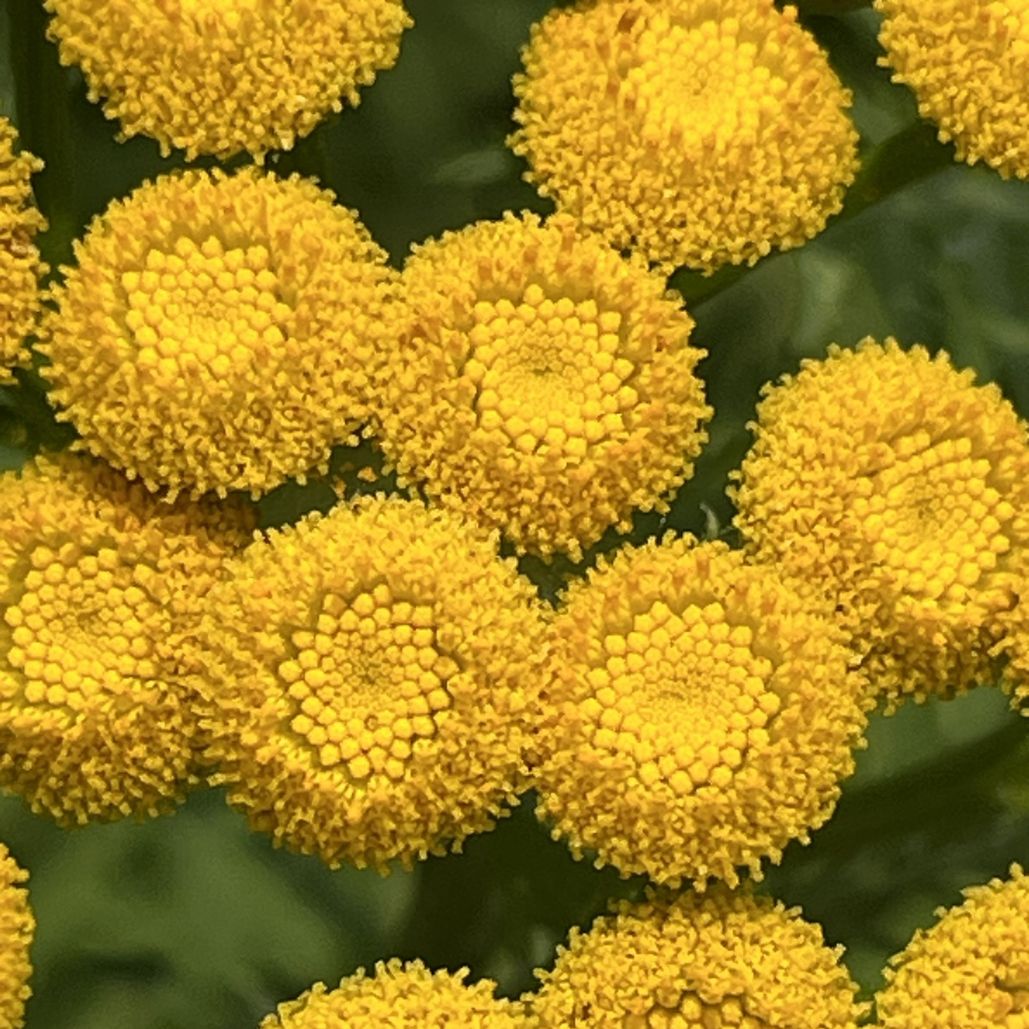ヨモギギクは欧州で昔、死者に手向けられ、墓所に植えられた「不死」の薬草。一方、生きている人が口に入れると死ぬ恐れもある毒草です。
Tansy is a herb of “immortality” that was once offered to the dead in Europe and planted in their graves. However, it is a poisonous plant that can be fatal if ingested by a living person.
【仮名】ヨモギギク, タンジー
【和名】蓬菊
【英名】Tansy, Common Tansy
【学名】Tanacetum vulgare
【誕生】08/ 12, 11/ 07
【開花】07, 08, 09月
【花色】Yellow
ヨモギギク
ヨモギギクの概要
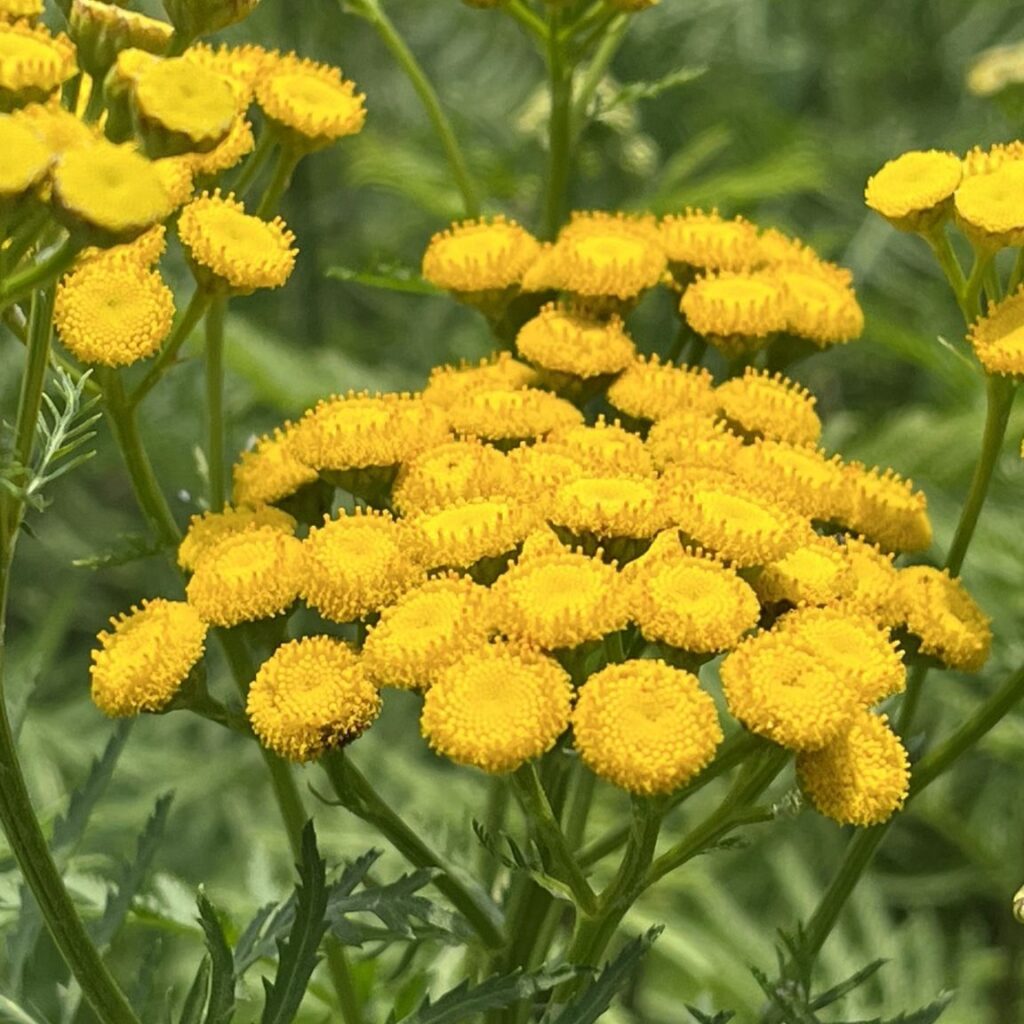
ヨモギギクはキク科の多年草。ユーラシア大陸に分布し、日本へは明治~大正時代に渡来しました。欧州では昔、その葉や花を死者に手向けると遺体が傷まず、墓所に植えると悪い虫が寄ってこなくなる、「不死」の薬草。一方、生きている人が口に入れると死ぬ恐れもある毒草です。
ヨモギギクの名前
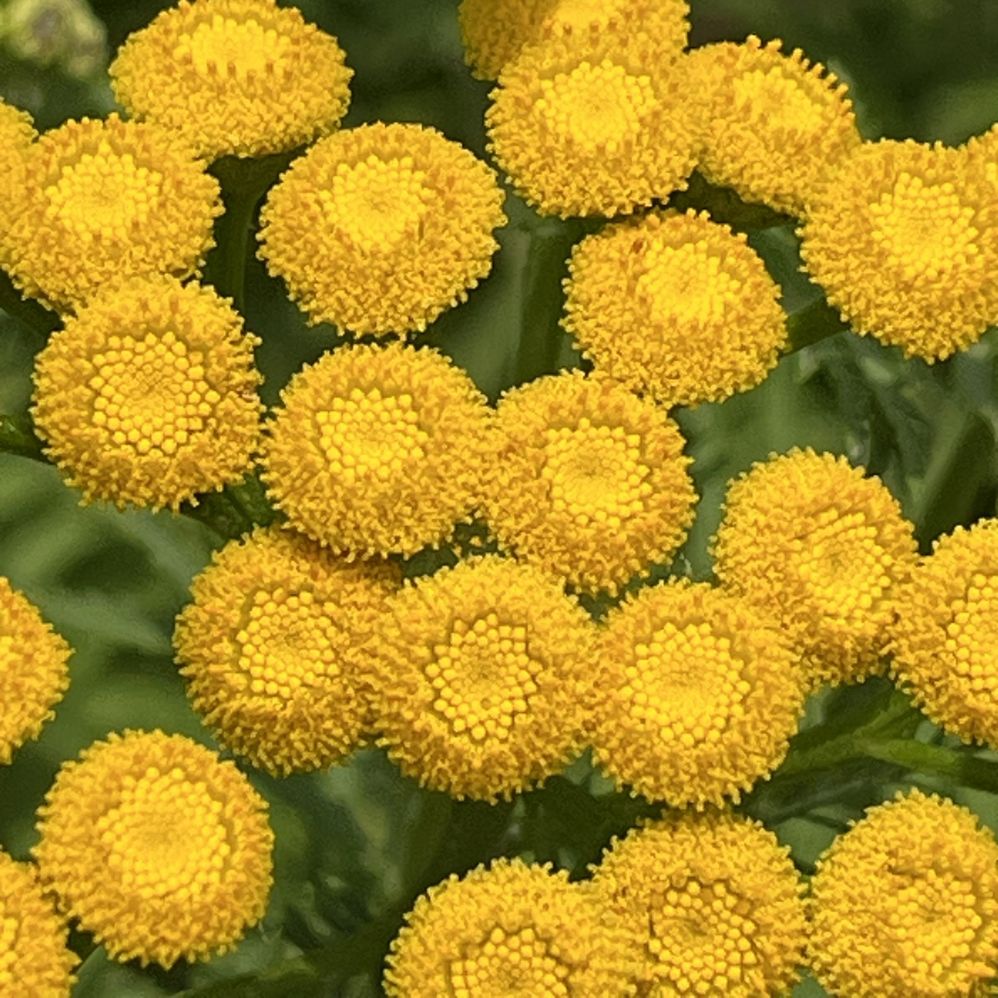
ヨモギギクの和名の由来は、羽状複葉、舌状花のない頭花、樟脳のような香りが「蓬」に似ている「菊」だから。欧州ではラテン語で「不死」を意味するアタナシアがタナジタに変わり、それが属名タナセタムや英名タンジーへと転じました。種小名ブルガレは「普通の」という意味。
ヨモギギクの姿形
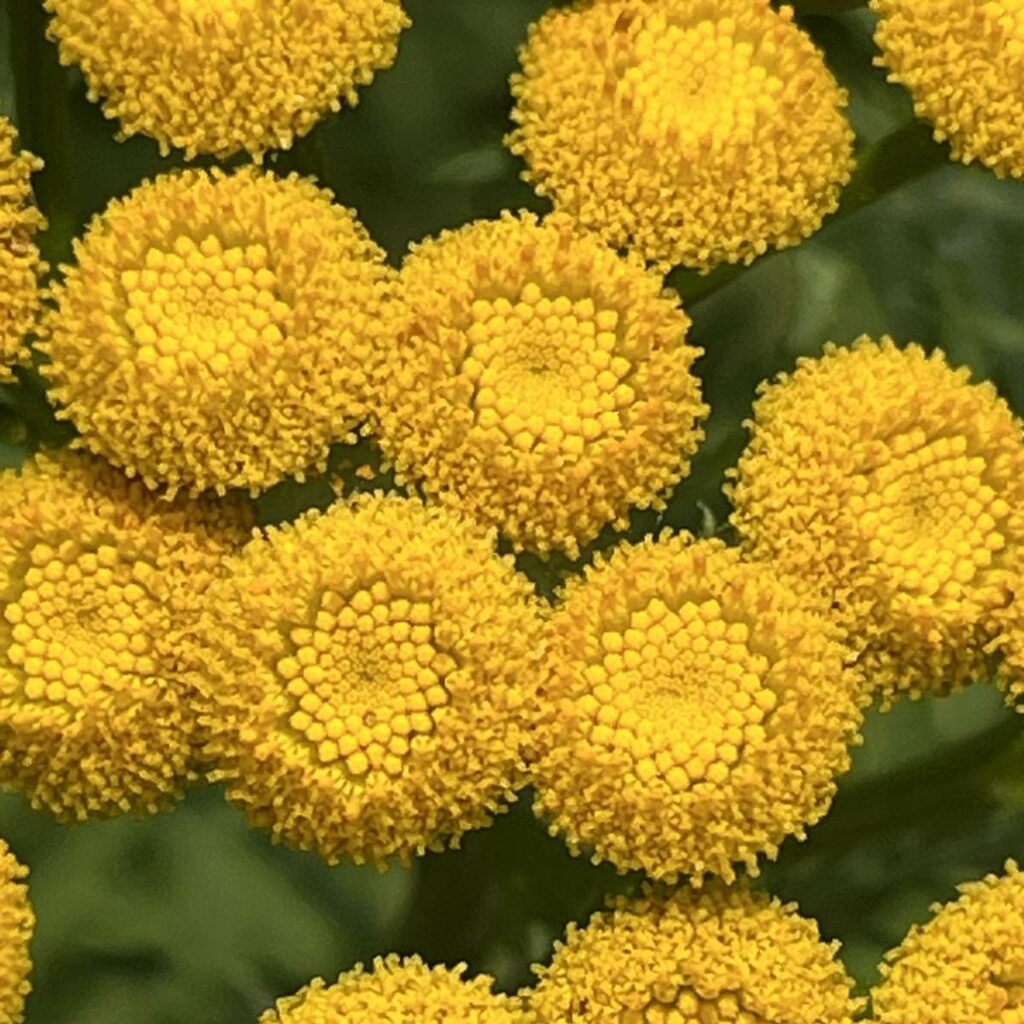
ヨモギギクは地下茎が発達し、四方八方に這い伸びます。茎は強健で下方が赤みを帯び、上方が盛んに分枝。葉は羽状複葉で互生し、鋭い鋸歯があります。花は舌状花のない、筒状花のみの頭花。ボタンのような頭花が20~30ほど平たく集まって咲く散房花序です。花後は痩果を形成。
ヨモギギクの利用
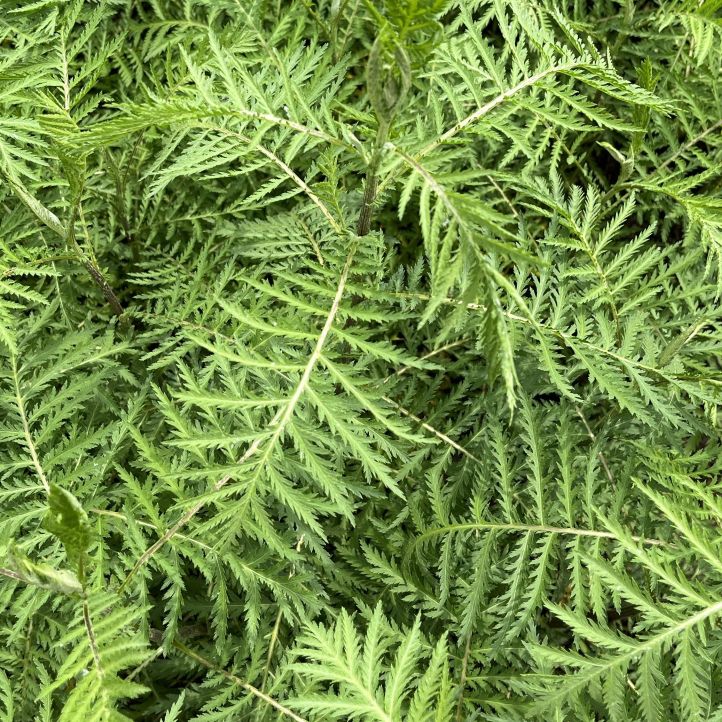
ヨモギギクは全草に防虫作用のある精油が含まれます。ノミ、シラミ、ダニなどの衛生害虫、イガ類、カツオブシムシ類などの衣料害虫に有効。かつて薬草として利尿、食欲増進などに用いられましたが、強い毒性があり、摂食で嘔吐、痙攣、多臓器不全などを起こす恐れがあります。
Tansy
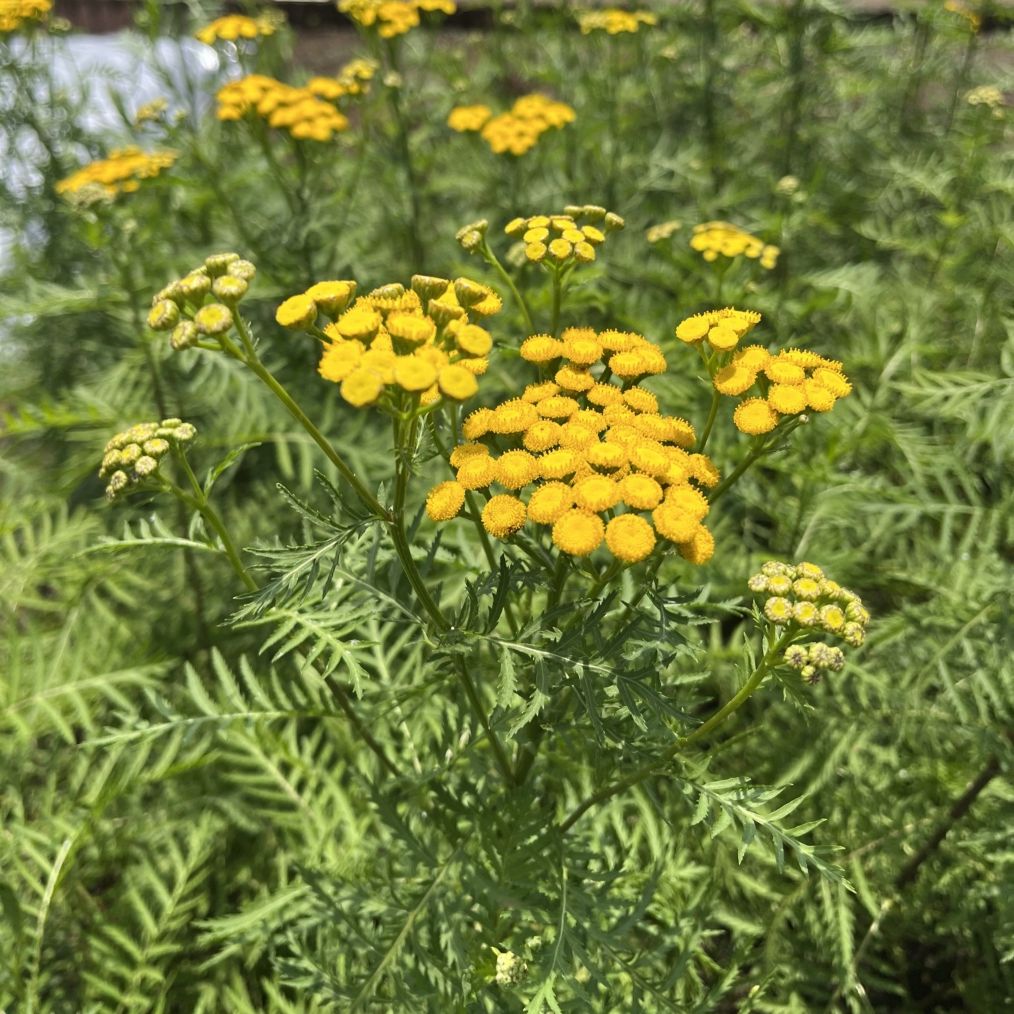
Tansy is a perennial plant of the Asteraceae family. It is distributed across Eurasia and was introduced to Japan during the Meiji and Taisho eras. In Europe, it was once a herb of “immortality” that would keep the body from being damaged if its leaves or flowers were offered to the dead, and would keep evil insects away if planted in their graves. However, it is a poisonous plant that can be fatal if ingested by a living person.
The Japanese name for tansy means “mugwort chrysanthemum.” This is because its pinnate compound leaves, flower heads without ray flowers, and camphor-like scent are similar to those of mugwort. In Europe, the Latin word Athanasia, which means “immortality,” changed to tanazita, which then became the genus name Tanacetum and the English name Tansy. The specific name vulgare means “common”.
Tansy has a developed underground stem that creeps in all directions. The stem is strong, reddish at the bottom, and vigorously branched at the top. The leaves are pinnately compound, alternate, and have sharp sawtooth. The flowers are heads of only tubular flowers, without ray flowers. The button-like heads bloom in a corymb, with about 20 to 30 flat clusters. After flowering, achenes form.
The whole plant of Tansy contains essential oils that have insect repellent properties. They are effective against hygiene pests such as fleas, lice, and mites, and against clothing pests such as moths and weevils. Tansy was once used as a medicinal herb to promote diuresis and appetite, but it is highly toxic and can cause vomiting, convulsions, and multiple organ failure if eaten by mistake.

